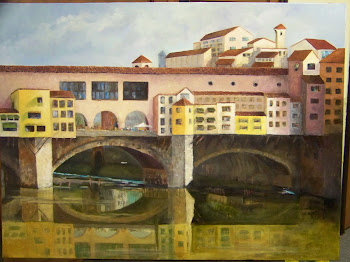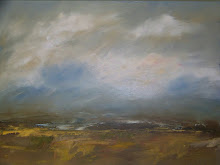
The 700 year old Olive Tree
and old lady in baggy pants
In the southwest corner of Sicily, you will find 3 amazing places, producing 3 amazing products.
In the southwest corner of Sicily, you will find 3 amazing places, producing 3 amazing products.
1st Stop
Castelvetrano, Sicily
Castelvetrano, home of Gianfranco Becchina's Olio Verde, the best olive oil I've ever had. I spent mid-morning to mid-afternoon there with the group I was touring with.
 Gabriella Becchina was our host and guide, taking us for a walk through the olive trees, explaining the life of a olive tree. The photo above is , unfortunately, of me standing in front of the 700 year old olive tree.Gabriella explained the tree appeared to be dead for years, but due to its age, they refused to remove it. Good thing, because last year the magnificent old tree sent out some green shoots, followed by leaves. It even had a few olives this harvest season! I think that tree has a safe haven from now until forever.
Gabriella Becchina was our host and guide, taking us for a walk through the olive trees, explaining the life of a olive tree. The photo above is , unfortunately, of me standing in front of the 700 year old olive tree.Gabriella explained the tree appeared to be dead for years, but due to its age, they refused to remove it. Good thing, because last year the magnificent old tree sent out some green shoots, followed by leaves. It even had a few olives this harvest season! I think that tree has a safe haven from now until forever.
This family has owned the land and the trees for several generations. Gabriella lived in New York on September 11, 2001. As soon as airlines were back in business, she returned to the place she thought of as home, her Grandmother's home. Today, that house is a beautiful Bed and Breakfast surrounded by an unbelievable water garden, olive groves and a business that has had amazing growth since Gabriella has taken over.
******************************************************
2nd Stop:

Trapani, Sicily
Sea salt is sooooooo much better than Morton's! That little girl with her umbrella is cute, I used her salt for years. But once you try real sea salt, that little girl is worthless!
 We arrived in Trapani knowing that we would see ancient windmills that are used to pump water in and out of the salt beds, and of course, it is right on the Mediterranean. The salt beds are a series of sectioned off pools, varying in depth. Sea water is pumped into the first one, water evaporates to a certain level then the water is pumped to pool number 2 which is more shallow than the first. There it is allowed to evaporate again, leaving water that is saltier and becomes even saltier with each pool. Finally, after many pools and many days, it is extremely concentrated. The salt is harvested by hand, gently removing the crystals to the drying mounds, big piles of salt on the beach. There it sits, looking like pyramids along the sea, drying for however long it takes. Sea Salt from different locations around the Mediterranean can be identified by its color, its type and size of grain, etc.
We arrived in Trapani knowing that we would see ancient windmills that are used to pump water in and out of the salt beds, and of course, it is right on the Mediterranean. The salt beds are a series of sectioned off pools, varying in depth. Sea water is pumped into the first one, water evaporates to a certain level then the water is pumped to pool number 2 which is more shallow than the first. There it is allowed to evaporate again, leaving water that is saltier and becomes even saltier with each pool. Finally, after many pools and many days, it is extremely concentrated. The salt is harvested by hand, gently removing the crystals to the drying mounds, big piles of salt on the beach. There it sits, looking like pyramids along the sea, drying for however long it takes. Sea Salt from different locations around the Mediterranean can be identified by its color, its type and size of grain, etc.Judy Witts Francini's blog, "Over a Tuscan Stove", has an article about salt in which she says "Sicily has produced salt since the Phoenicians occupied the territory more than 2,000 years ago. Many forget it was the world's foremost preservative in pre-refrigerated times. Meats and herbs were chopped with fine sea salt to absorb moisture and keep them from rot. Salted pork was a staple for sailors.
I toured salt works in Trapani. The refinement process intrigued me. Salt water is shifted from pool-to-pool using an Archimedes screw pump (he's believed to have invented the device in ancient Siracusa, where he lived).
The process, called solar evaporation, sees brine gradually moved from one pond to another, with each pool containing a higher level of salinity. Wind and heat then help the water to evaporate, leaving salt crystals floating on the top.
That top layer, called fior di sale, is lower in sodium than table salt and rich in magnesium, potassium, fluorine, and is scraped off first. The rest is transferred to shore and left to dry in pyramid-style structures with tile rooftops. Farmers let the sun and wind slowly do their corroding work and harvest the crystals twice a year."

So, if you haven't tried sea salt yet, please do yourself a favor...give it a try.
And yes, I am definitely partial to Trapani Sea Salt.
******************************************************
Last stop:

Marsala, Sicily
Those of you who know me, know I am very involved with my daughter's and son-in-law's vineyard and winery, Somerset Ridge. I was there the day we planted the first vines, April 1, 1998. I have cooked every harvest season for the hungry pickers; I learned to prune the vines, I have labeled thousands of bottles, the first few years by hand! Today, I have reached the level of employment known as semi-retired. I'm not up to winter pruning, I don't like the cold. We now have a semi automated bottling line, and Somerset has more employees, so I'm not needed on the line. Now days, I'm the chef, period. But my interest in the vines, the wine, the tasting room has not retired, nor has my need to know more about wine. When I found out we would be touring the Florio Marsala Winery in Marsala, Sicily, I was very pleased. The procedure for making Marsala wine is similar to Somerset Ridge's procedure for making Port. Florio receives wine from another winery then turns it into Marsala over years of aging after the cognac has been added. I actually saw a barrel of Marsala that was stored in the cellar that was dated 1941, the year I was born. Their museum was facinating, full of bottles from the early 1900s. They were hidden during WWI and WWII so all those invading countries wouldn't either ship it home or drink it on the spot.
Florio prepared a wonderful tasting of Marsala Wines and Sicilian food for us, and, we ate and drank it all. After all, that was our mission!






No comments:
Post a Comment